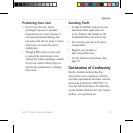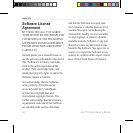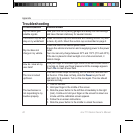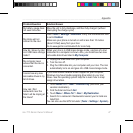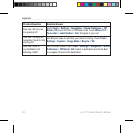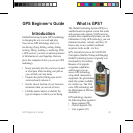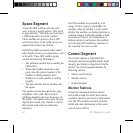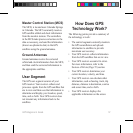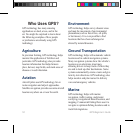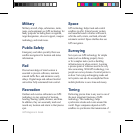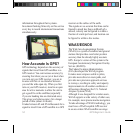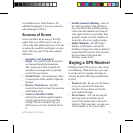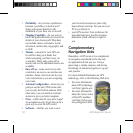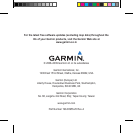GPS Beginner’s Guide 55
is available such as North America. No
additional equipment or fees are required to
take advantage of WAAS.
Sources of Errors
Errors can affect the accuracy of the GPS
signal. Take your GPS receiver to an area
with a wide and unobstructed view of the sky
to reduce the possibility and impact of some
errors. Here are some of the most common
GPS errors.
Ionosphere and Troposphere •
Delays—the satellite signal slows down
as it passes through the atmosphere.
The system uses a built-in model that
calculates an average delay to partially
correct this type of error.
Orbital Errors• —this terminology refers
to inaccuracies of the satellite’s reported
location.
Receiver Clock Errors• —the GPS
receiver has a built-in clock that can have
small timing errors.
Number of Satellites Visible• —
obstructions can block signal reception,
causing position errors or no position
reading. The more satellites that your
GPS receiver can view, the better the x
is.
Satellite Geometry/Shading• —refers to
the relative position of the satellites at
any given time. Ideal satellite geometry
exists when the satellites are located at
wide angles relative to each other. Poor
geometry results when the satellites are
located in a line or in a tight grouping.
Signal Multipath• —the GPS signal
bounces off of objects, such as tall
buildings or large rock surfaces, before it
reaches the GPS receiver. This increases
the travel time of the signal and,
therefore, causes errors.
Buying a GPS Receiver
Deciding which GPS receiver to buy can be
overwhelming. Think about how you want
to use the unit, for example, traveling or
running. Keep the following considerations
in mind:
Product Level• —do you want the basics,
or do you want all of the bells and
whistles? You can nd a unit that ts
your needs and budget.
Power Source• —will you be using the
unit away from an auxiliary power
source? You might need to carry extra
batteries. With some units, you can use a
vehicle adapter or AC power source.




